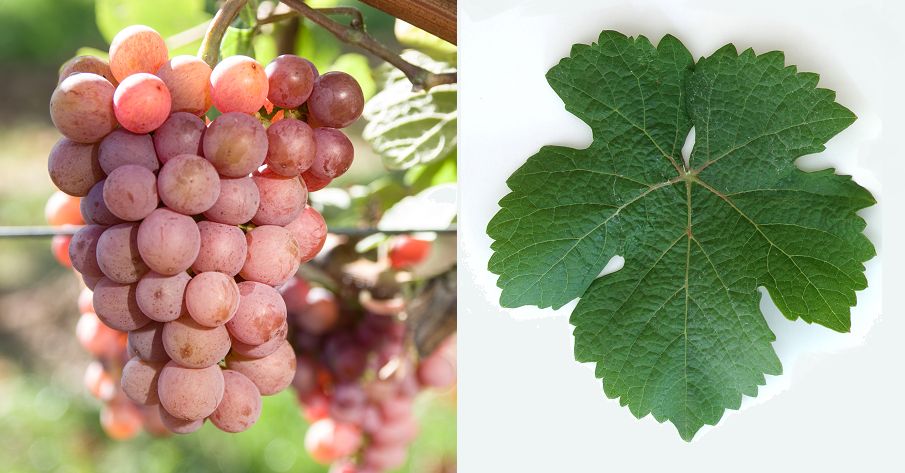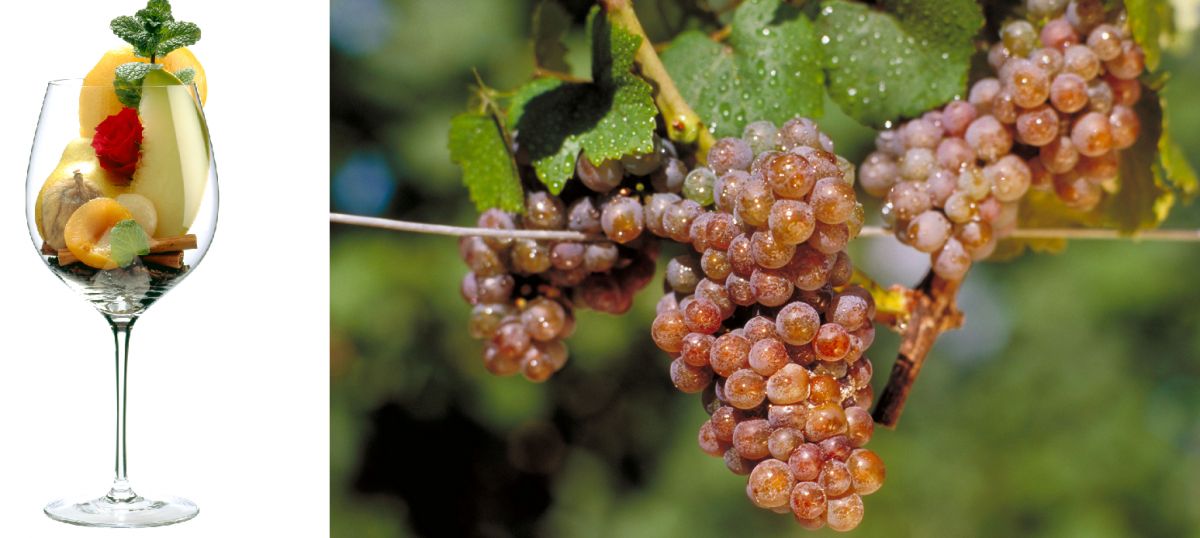The white grape variety is by far the most common variety of Traminer (see there for information on the Traminer family), which is referred to in many sources as Savagnin Blanc (or Savagnin for short). The numerous synonyms are partly also used for other varieties such as Savagnin Rose and for Traminer in general. Therefore, one cannot infer the "correct" variety without any doubt from the name/synonym. The most important ones grouped alphabetically by country are Savagnin Rose Aromatique (Australia); Mala Dinka (Bulgaria); Clevner, Dreipfennigholz, Klevner, Rother Muskattraminer, Roter Traminer, Traminer Rot (Germany); Bon Blanc, Duret Rouge, Gentil Aromatique, Gentil Rose Aromatique, Formentin Rouge, Fromenteau Rouge, Rousselet, Traminer Aromatique, Traminer Parfumé(France); Traminer Aromatico (Italy); Traminac Crveni, Traminac Diseci, Traminac Mirisavi, Traminac Mirisavi Crveni, Traminac Sivi (Croatia); Christkindlestraube, Christkindltraube, Fleischrot, Fleischroth, Fleischvainer, Fleischweiner, Kleiner Traminer, Rosentraminer, Roter Traminer (Austria); Rusa, Traminer Roz (Romania); Tramín Červený(Slovakia); Heidarot (Switzerland); Diseci Traminec (Slovenia); Tramín Červený Czech Republic); Traminer Musqué, Traminer Rose (Moldova, Ukraine); Tramini Piros, Fűszeres Tramini, Piros Tramini (Hungary).

This is a flavour mutation of the Savagnin Rose variety, with which it is often confused or equated. The difference between the two varieties is the spicy muskiness (musqué), which Gewürztraminer shows most distinctly of all Traminer varieties, but Savagnin Rose does not, or only to a small extent (this is why it is also called Savagnin Rose Non Musqué). Savagnin Rose (Red Traminer) is a rose-berry mutation of the Savagnin Blanc variety (White or Yellow Traminer). The Gewürztraminer variety was also used in some new varieties (see a complete list of direct descendants under the heading Traminer).
Gewürztraminer was first mentioned under this name by the German university gardener Johann Christian Metzger (1789-1852) in 1827 as a rare variety from the Rheingau. The vine is particularly susceptible to viral diseases, which has since been solved by selecting resistant clones. It yields white wines rich in extract and alcohol, often with a slightly reddish copper tone and intense aromas of musk (musqué), bitter orange, lychee (lychee tree), marzipan and roses typical of the variety. This is why the vine is also counted among the bouquet varieties.

In many sources it is not clear which Traminer variety is involved. However, since Gewürztraminer is by far the most common variety in terms of volume, this is not problematic. Most countries show all Traminer varieties together in their statistics (exceptions are Australia, France, Romania, Russia and Switzerland). In Kym Anderson 's statistics, quantities are shown under the three names Gewürztraminer, Savagnin Blanc (Traminer) and Savagnin Rose (France and Hungary only). For some of the countries now listed, two numbers are given (number 1 = Gewürztraminer / number 2 = Savagnin Blanc), for only one number it is Gewürztraminer and/or Savagnin Blanc.
In Austria, no distinction is made between the varieties in the variety survey, but they are grouped together under Traminer. Gewürztraminer, Roter Traminer and Gelber Traminer are considered admissible synonyms here. The Austrian area under cultivation is 284 hectares. In Germany, the quantity is only reported under the name Roter Traminer (Gewürztraminer); here, the variety is cultivated on 1,057 hectares of vineyards with an upward trend.
Other countries in Europe are Bulgaria (591 ha), England, France (3,320/484 ha), Italy (1,321 ha), Croatia, Luxembourg (21 ha), Moldova (1.099 ha), Portugal (0.2 ha), Romania (469/53 ha), Russia (500/214 ha), Switzerland (51/127 ha), Serbia (142 ha), Slovakia, Slovenia (0/209 ha), Spain (373 ha), Czech Republic (591 ha), Hungary (694 ha) and Ukraine (500 ha). Overseas, the countries are Argentina (0/22 ha), Australia (252/870 ha), Brazil (9 ha), Chile (371 ha), China, Canada (398/1 ha), New Zealand (277 ha), South Africa (106 ha), Uruguay (19 ha) and USA mostly in California (897 ha).
In 2016, a total of 12,823 hectares of vineyards were recorded under the name Gewürztraminer. The variety is thus in 58th place in the global grape variety ranking. 2,267 hectares were recorded under the name Savagnin Blanc and under Savagnin Rose 48 hectares. If these three quantities are combined, the total vineyard area is 15,138 hectares.
Source: Wine Grapes / J. Robinson, J. Harding, J. Vouillamoz / Penguin Books Ltd. 2012
Grapes and leaf: Ursula Brühl, Doris Schneider, Julius Kühn-Institut (JKI)
Glass with aromas: © armin faber Info@faberpartner.de
Voices of our members

For me, Lexicon from wein.plus is the most comprehensive and best source of information about wine currently available.
Egon Mark
Diplom-Sommelier, Weinakademiker und Weinberater, Volders (Österreich)